Using neuroscience to create an effective presentation

Our own forgetfulness can undermine even the best presentations. It’s the hole in the bucket that turns a great presentation into a waste of time. Talk all you want, but if no one remembers what you said a week (or even a day) later, the effort was wasted.

Few people understand forgetfulness better than Dr. Carmen Simon, cognitive scientist, author, and founder of Memzy. Dr. Simon has built a career on creating effective presentations using neuroscience.
In her webinar, Using neuroscience to create presentations with lasting impact, Dr. Simon outlined the science of attention and memory: two processes vital in creating a memorable presentation. There are several obstacles to both, including:
- Stress
- Motivation
- Amount of sleep
- Content relevance
- Interference from new memories
Together, these obstacles and others contribute to the forgetting curve, a disheartening bit of research that hypothesizes the steep decline of memory retention over time. In brief, we forget most new content very quickly. Then the curve levels off, which is why older memories stick around.
“It’s possible that we forget up to 90 percent – sometimes even more – of content we’re exposed to.” – Carmen Simon, founder of Memzy
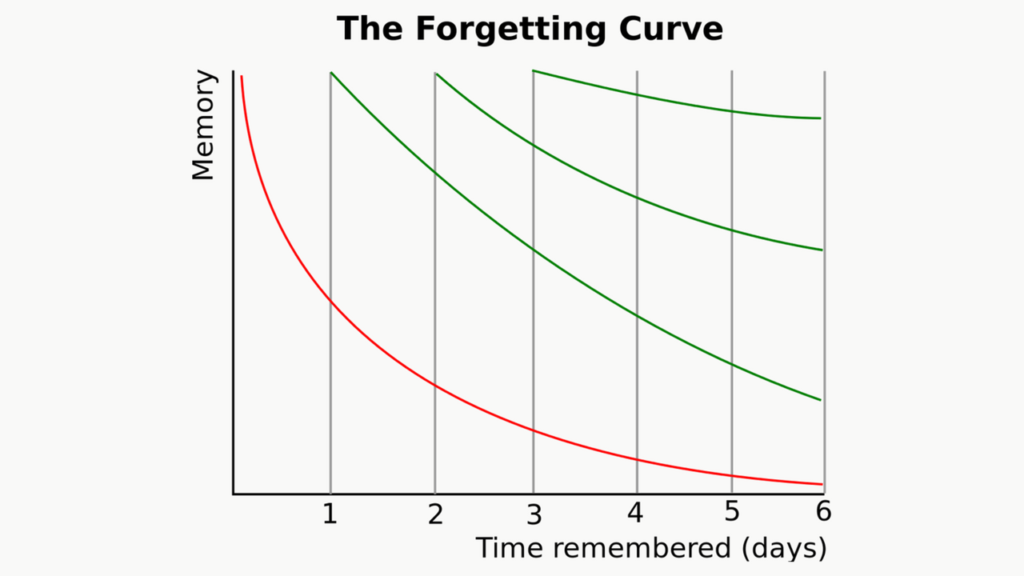
And it gets worse. As Simon pointed out, not only do we forget most new content, the content we do remember is typically selected at random.
Knowing that, how can presenters ensure their audiences remember the right things (and not random things)? It all comes back to attention and memory.
In this post, I summarize the key takeaways from Dr. Carmen Simon’s webinar, but I strongly encourage you to watch the talk in its entirety below. Simon does an outstanding job outlining how to gain audience attention, hold that attention, and make it as easy as possible for them to remember key information.
Plus, many of her presentation tips are incorporated into the webinar itself.
The neuroscience of effective presentations
Step 1: Gain your audience’s attention
“Attention is definitely mandatory to people remembering the right things, and not just random things.” – Carmen Simon
According to Simon, the first step in giving an effective presentation is gaining the audience’s attention. Sure, they may be staring back at you, glassy-eyed and dreaming of the weekend, but that’s not true attention.
True attention requires overcoming habituation. According to Simon, habituation is “when you get used to a stimulus [and] start paying less and less attention to it.” People tune things out. Air conditioners, music, our own breathing – we’re programmed to automatically tune out all sorts of stuff. And if you’re not careful, audiences will tune you out as well.
Overcoming habituation relies on stimulus internal variation, which Simon called “a fancy way of saying ‘the degree of change over time.'” We tend to pay more attention to things that change, and ignore things that stay the same.
Hollywood blockbusters are a masterclass in overcoming habituation. Simon discussed how, in the 1930s and 1940s, Hollywood films had an average shot length of about 10 seconds. After 2000, that average plummeted to under 4 seconds. Quick cuts. Snappy dialogue. Lots of movement. “For the modern brain, our threshold for stimulation has increased,” she said.
You must recognize this trend if you want to make your presentations more effective. Borrowing a term from Hollywood, Simon encouraged adding more “cuts” to your presentations. Like cutting between shots in a movie, cuts in a presentation transition from one activity – lecture, Q&A, or live demo – to another.
Variation excites the mind. It makes people perk up and pay attention. Variety is the spice of life, as well as the lifeblood of an effective presentation. So how often should you cut?
“How often do we provide a cut? I’ve heard different statistics, some recommend that every three minutes you provide a cut by changing something in your presentation style.” – Carmen Simon
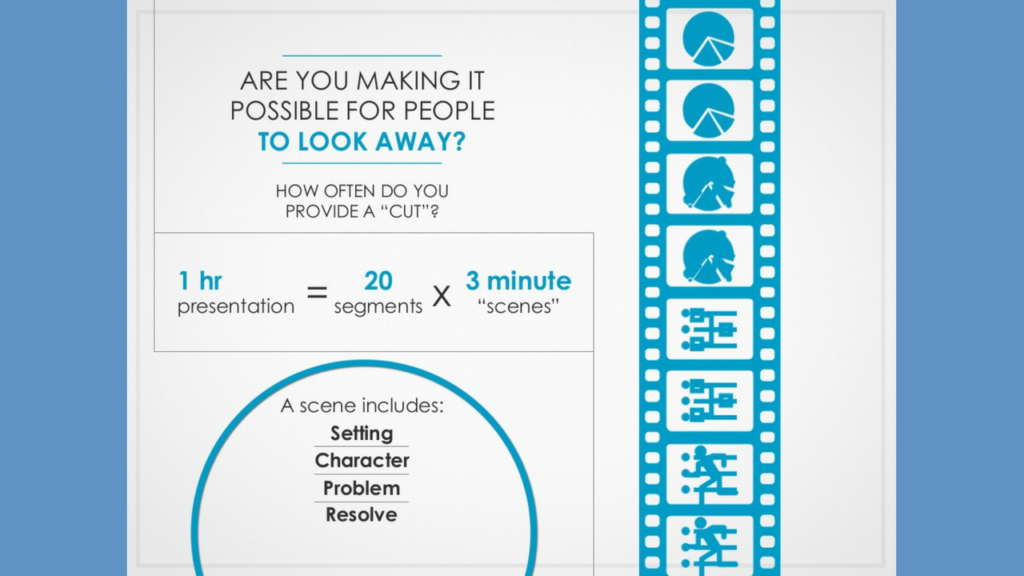
Cutting between different types of content and presentation styles is one way of overcoming habitation. Another is dopamine.
Dopamine is a neurotransmitter dealing with pleasure and reward. It’s the elation you feel when you take that first bite of birthday cake, or receive a Facebook message from an old friend.
“When [dopamine] is present, your audience may be more likely to exert some effort in your favor,” Simon said, “even if it’s just paying attention to you.”
According to Simon, the key to releasing dopamine is the anticipation of pleasure. Comedians excel at this. They start a joke, get you anticipating the punchline, and then deliver on it to raucous laughter. And, chances are, you remember a few of those jokes to tell your buddies the next day.
Anticipation can be incorporated into a presentation in several ways. Early in her webinar, Simon herself teased a contest she’d hold later on for a collection of Starbucks gift cards. That anticipation paid off about halfway through the talk – a great “cut” from the norm – and the attendees were quick to respond.
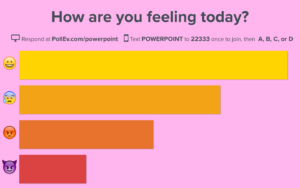
Mix things up with live audience feedback
Break up the flow of your presentation and help key points sink in with an interactive question powered by Poll Everywhere. Your audience responds online or via text, and the results update live for all to see.
Step 2: Hold your audience’s attention
After talking about gaining attention through smart cuts and building anticipation, Simon moved on to holding that attention.
“We know attention depends on what your audience’s can sense, what they already know, and what they can infer,” she said. Understanding this trio – sense, know, infer – is how you hold audience attention. Simon touched briefly on each one:
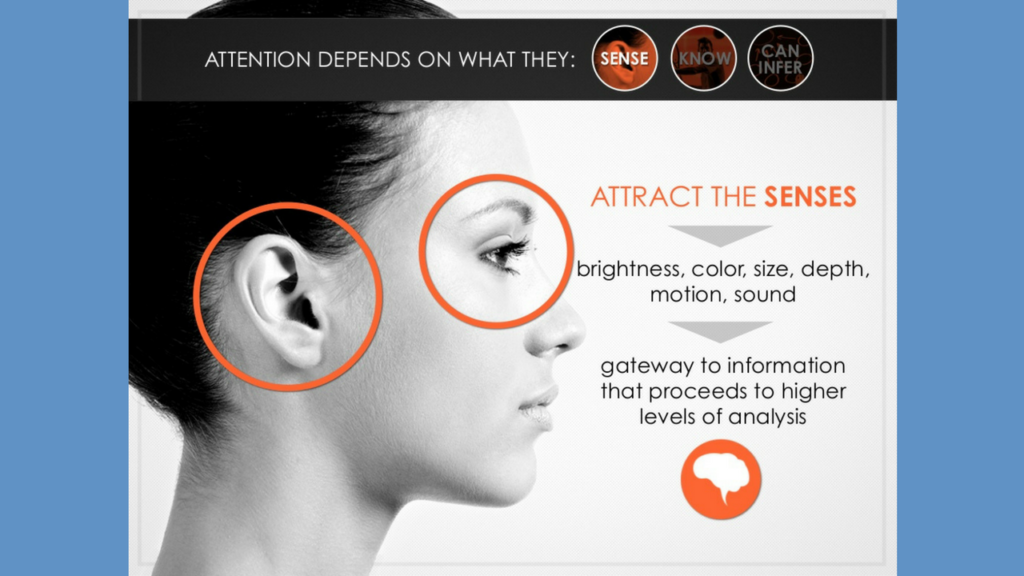
Attract the senses using strong colors, varying font and image sizes, and sound.
“Unless you attract attention with some of these first, you’re making it harder for information to go into higher levels of processing.”
Link content to what your audience already knows.
Simon referenced The Book of Qualities by J. Ruth Gendler as an excellent example of describing abstract emotions in concrete, relatable terms. “The brain literally and physically notices more of what it already knows.”
Think about your audience’s point of view.
This is a big one, as it ties into a key skill – or rather, emotion – that all presenters should value: empathy. The best way to reach your audience is to know your audience. As Simon described it, try to put yourself in your audience’s shoes and view your presentation from their point of view.
Step 3: Help your audience build lasting memories
This is arguably the most important part of any presentation: forming memories.
Once you have the audience’s attention, and can hold that attention, you’re finally ready to make your key points stick.
“Memory depends on the type of processing you’re enabling your audience to do,” said Simon. “The deeper they processer your material, the more likely a memory [will be] formed.”
According to Simon, there are three levels of process your audience can perform: physical, phonological, and semantic. The first two are insufficient for creating a lasting memory; what we want is semantic processing.
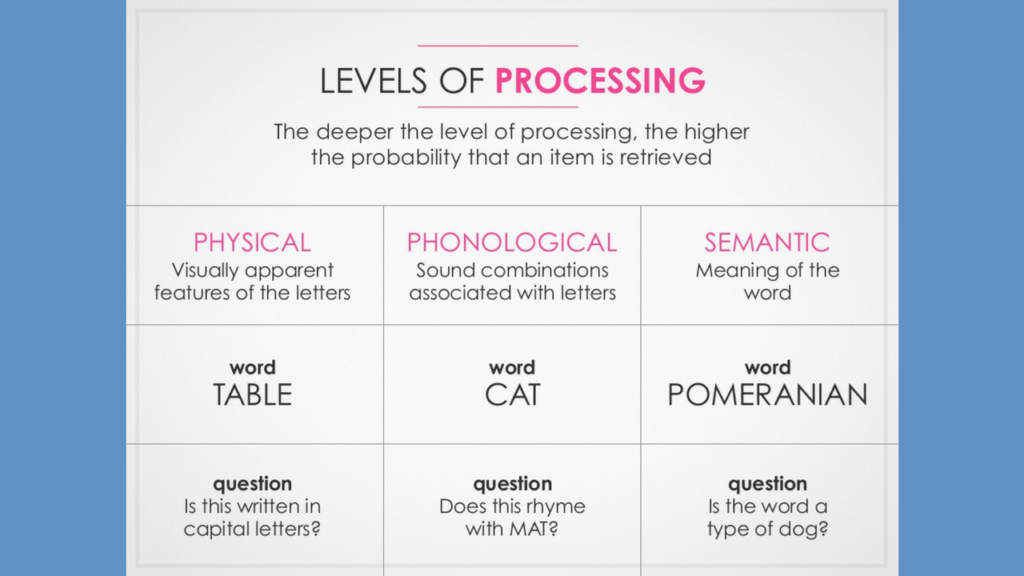
Semantic processing goes beyond the surface-level aspects of your presentation (how it looks and sounds) and cuts to the heart of the matter: what does this information mean to you? By challenging your audience to consider what impact the information you’re presenting will have on their lives, you force them to internalize the content on a much deeper level.
It’s within this deeper level of mental processing that memories are formed.
“When you go beyond the physical aspect of what you provide, and insist on the meaning of what it offers, [you create] the circumstances for a longer-lasting memory because you have enabled people to process your materials deeper.”
What does this mean to you? It’s a simple question, but it’s the cornerstone of an effective presentation. As you move from one key point to another in your presentation, remember to take a moment and simply ask your audience what the information means to them.
How will you change your next presentation?
As Simon put it, being able to influence what others remember is “huge” and “definitely a skill for the modern presenter.” If people only remember a few bits of information from your presentation, don’t let those bits be random. Take control of what people take away.
- Gain audience attention using smart cuts and by building anticipation
- Hold that attention by engaging the senses and making information relatable
- Create lasting memories by asking ‘What does this mean to you?’